The Micro-Geography of collection
Jon Mitchell
I approached Lourdes for the first time, as a social scientist who is rationalist, if not necessarily sceptical. Not raised in Catholicism, I have nevertheless been working ethnographically with Catholics throughout my academic career, mostly in Malta, the Mediterranean island state. I have tried at all times to stick to anthropologist Fanella Cannell’s edict that we ‘take seriously’ the religious beliefs of others - including not necessarily seeing them as beliefs at all, but rather as reality. It is a stance of humility and empathy, but also of outsiderhood.
As many have observed, ethnographic work in a religious context brings the self/other question into particular relief. It was with this in mind that I made my first journey to Lourdes. On a rainy and chilly week in November 2022, I found both town and shrine quiet with a decided ‘out of season’ feel. Although as this was late 2022, when COVID-19 restrictions had only relatively recently been lifted, I wondered how many of the locked-up hotels and shuttered shops would find themselves able to re-open were the crowds to return. Such pilgrims as were visiting the shrine were mostly Italians; though there were also groups of English-speaking pilgrims – from Sri Lanka, the Philippines, Anglophone Africa; as well as some from the UK.
In my Maltese work, I had become interested in the geography of sacred sites, particularly what the philosopher James Gibson called ‘affordances’: the extent to which topographic formations - the quality of rock; the convergence of water courses - contribute towards certain places being designated, even determined, as spiritually significant. The shrine of Lourdes sits, as might a mediaeval castle, on the depositing (or convex) bank of a meander in the river Gave, which separates the shrine from the town. Incidentally, the actual mediaeval castle of Lourdes sits in the centre of the town, on top of a rocky outcrop nowadays accessible by lift.
The shrine is therefore set apart, and on crossing the river from the town into the shrine’s precinct - or the domain, as it is called - there is an immediate contrast between the former’s streets, lined with hotels, cafes and souvenir shops, and the more open space of the shrine. Yet the economics of commerce in the town is replaced by what appears to be an economics of donation, led by its own micro-geography.
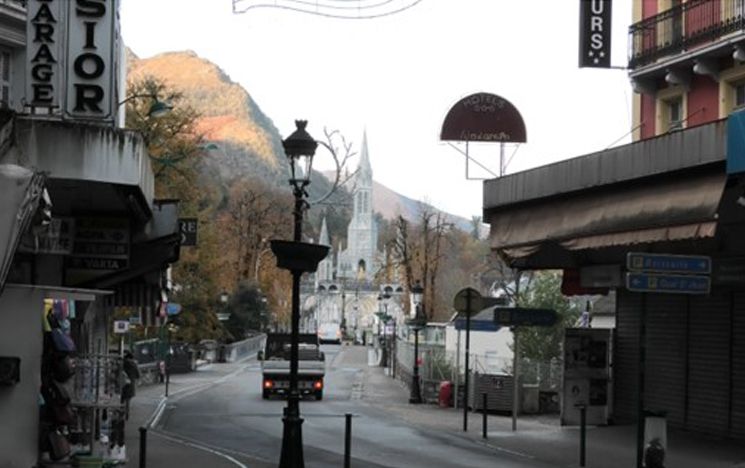
Figure 1: The shrine from Lourdes town
As one enters the shrine, there is immediately an invitation to make a voluntary donation for its upkeep. Similar opportunities are provided at the diorama exhibit that depicts Bernadette Soubirous (St. Bernadette)’s visions of Our Lady, the Virgin Mary, that are the reason for the existence of the shrine. Donations can also be made at the taps that flow with water from the spring that Our Lady revealed to Bernadette, and which she told her to drink from and wash in; at the statue of Our Lady crowned, where it is said that if you say three ‘Hail Mary’s’ you will return to the shrine next year; and at the ‘chapels of light’ where you can light a candle as a focus for prayer and remembrance of a relative or friend.
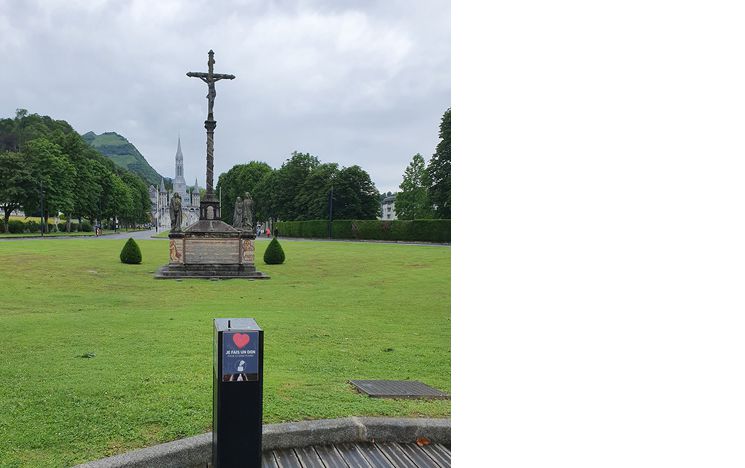
Figure 2: Collection box at the shrine entrance
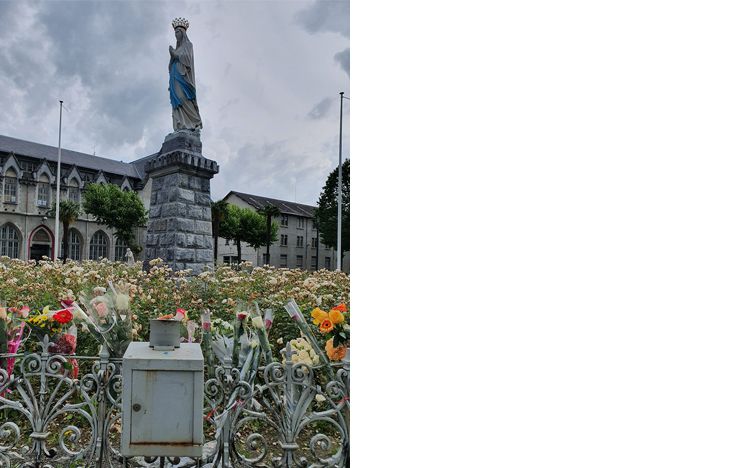
Figure 3: Collection box by the statue of Our Lady crowned
According to reports, the Lourdes shrine has an annual budget of around 20 million euros, 90% of which is derived from donations of various types - including those collected at the various collection points throughout the shrine, and during its many mass celebrations. During the summer pilgrimage ‘season’, there are multiple masses daily in the numerous consecrated basilicas, churches and chapels on the shrine site. In the winter, this is scaled back, so that in November 2022 there were six daily masses in French, and one each in Italian, Spanish, English and Polish; this alongside periodic Rosary, Adoration and Stations of the Cross.
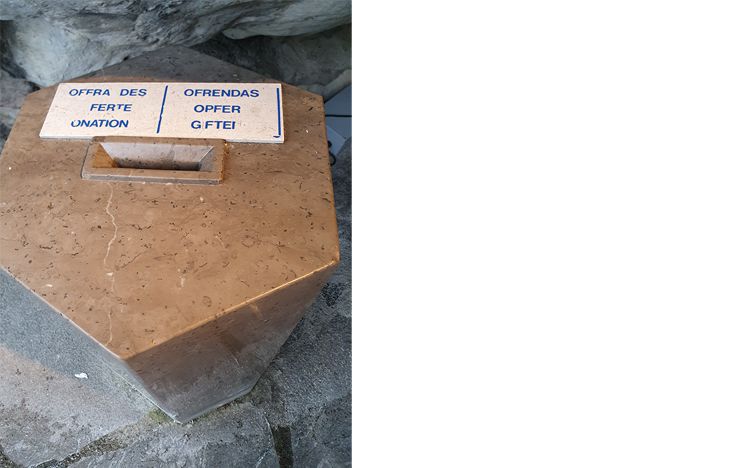
Figure 4: Collection box in the Lourdes grotto
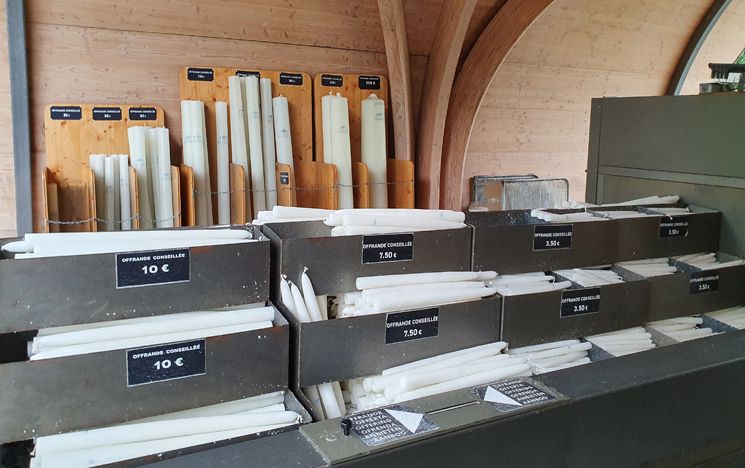
Figure 5: Candles with collection box in the 'chapels of light'
It was my first mass at Lourdes on a grey Thursday morning, and I crept quietly in to the Basilica of the Immaculate Conception, which was the first church to be built at Lourdes, following Our Lady’s instruction to Bernadette that this should be done. I sat towards the rear of the small congregation - maybe twenty people - conscious of my non-Catholic outsiderhood, and my purpose for being there: research.
As soon as I had sat down, I was approached by one of the nuns who handed me a metal collection box, and asked me to administer the collection at the appropriate moment. But I wasn’t entirely sure what the appropriate moment - or indeed the appropriate comportment - would be. I had been to hundreds of masses, and knew that this was to be done towards the end. Luckily, the nun approached another attendee to take another collection box and cover the other side of the congregation. I would take my cue from them as to when and how to make the collection. Much of the ‘participation’ in the anthropological method of ‘participant observation’ concerns such sensitivity or attuned-ness to the bodily movements of others as they themselves participate in their everyday activities - what phenomenologists call intercorporeality. Such participation enables one to better understand what it means to be part of a congregation or religious community; but also the more bodily, emotional, and as some may say, ‘deeper’ implications of religious practice.
The collection was taken, of course, during the offertory - the part of the mass in which the consecrated bread and wine are placed on the alter prior to the moment of communion itself. As this began, I saw the other collector stand and begin the circulate, offering the metal box up for attendees to slide money into the slot at the top. I matched their actions on my side of the central aisle, and luckily they finished before I did, so I could take the cue of what to do next. We walked side by side and solemnly up the aisle towards the altar, and placed the two metal boxes on the floor in front of it. There they remained until the end of the mass, to be collected by shrine operatives.
More than simple participation in the mass, with the consequent blurring of the self/other distinction, this moment drew me into the very micro-geography of collection itself – and so into one of the key elements of Lourdes pilgrimonics.